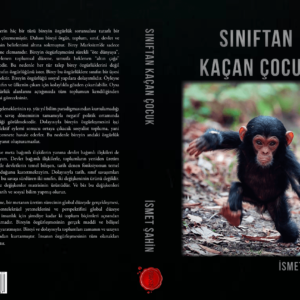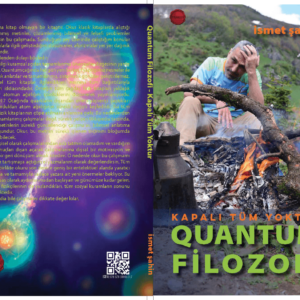
Optimal Nutrition and Hydration Approaches for Ultra-Distance Athletes

Optimal Nutrition and Hydration Approaches for Ultra-Distance Athletes
Abstract
Ultra-distance athletes face unique physiological demands during both training and competition. The strategies employed for nutrition and hydration are critical in maintaining optimal performance and enhancing recovery. This paper provides a comprehensive analysis of the balance between carbohydrates, proteins, and fats in ultra-distance events, examining their roles in fueling endurance, promoting recovery, and preventing fatigue. Additionally, we explore hydration strategies, focusing on electrolyte balance, fluid intake, and their influence on athletic performance. Through the synthesis of recent research, this paper aims to offer evidence-based recommendations for optimizing nutrition and hydration for ultra-distance athletes.
Introduction
Ultra-distance running, typically defined as races exceeding the standard marathon distance of 42.195 kilometers, imposes significant energy demands on the body. Athletes engaging in ultra-trail running, ultra-marathons, and other endurance disciplines must manage their nutrition and hydration to mitigate the effects of prolonged exertion. Proper nutrition ensures sustained energy release and supports recovery, while hydration strategies prevent dehydration, electrolyte imbalances, and other physiological disturbances. Both nutrition and hydration must be tailored to the unique metabolic requirements of ultra-distance athletes. This paper will analyze the role of macronutrients and hydration in endurance performance, exploring the scientific principles that govern effective strategies for these athletes.
Nutritional Demands of Ultra-Distance Athletes
Macronutrient Balance: Carbohydrates, Proteins, and Fats
- Carbohydrates: Carbohydrates serve as the primary fuel source for ultra-distance athletes, particularly during prolonged exertion. Glycogen, stored in muscles and the liver, provides readily available energy. However, glycogen stores are limited, with the average athlete storing only about 400-500 grams of glycogen, which can be depleted after 2-3 hours of sustained, moderate-intensity exercise (Jeukendrup, 2014). Therefore, athletes must consume carbohydrates during ultra-races to maintain blood glucose levels and delay fatigue.
- During Training and Racing: Research suggests that consuming 30-90 grams of carbohydrates per hour during endurance events is optimal for performance (Jeukendrup & Killer, 2018). High-carb foods, including energy gels, drinks, and bars, are commonly used. The absorption rate of carbohydrates can vary depending on the type of carbohydrate and its combination with others, such as glucose and fructose, which have different absorption mechanisms in the intestines (Cermak & van Loon, 2013).
- Proteins: Protein intake is often overlooked during endurance events, yet it plays a critical role in muscle repair, recovery, and immune function. While protein is not a primary energy source during exercise, its consumption can mitigate muscle breakdown and support recovery during prolonged physical activity (Achten & Jeukendrup, 2004).
- During Training and Racing: Although there is limited evidence supporting protein consumption during the actual race, it is recommended that athletes consume protein post-race to support muscle repair. A common guideline is to consume 0.25-0.4 grams of protein per kilogram of body weight post-event (Jentjens & Jeukendrup, 2003). Protein should be incorporated into recovery meals to enhance muscle protein synthesis.
- Fats: Fat is a secondary energy source during ultra-endurance events. While it is more energy-dense than carbohydrates (providing 9 kcal per gram compared to carbohydrates’ 4 kcal), the body’s ability to mobilize and oxidize fat at higher intensities is slower than carbohydrate utilization. However, during ultra-endurance events, where the intensity is lower, fat can contribute significantly to energy supply once glycogen stores are depleted.
- Fat Adaptation: Some ultra-distance athletes employ a high-fat, low-carbohydrate diet (such as the ketogenic diet) to promote fat oxidation over carbohydrate usage. However, evidence on the benefits of fat adaptation remains mixed, with some studies suggesting that it can help in long-duration, lower-intensity events but may impair performance during higher-intensity activities (Zajac et al., 2014).
Caloric Intake and Timing
The total caloric needs of ultra-distance athletes depend on several factors, including the athlete’s weight, race duration, and intensity. On average, ultra-distance athletes may burn between 600-1,000 kcal per hour during a race (Coyle, 2004). Therefore, a well-structured nutritional strategy that includes timely consumption of carbohydrates, proteins, and fats is necessary to meet these high energy demands.
It is crucial to develop a nutrition plan that ensures the athlete maintains energy levels while avoiding gastrointestinal distress, a common issue among ultra-distance athletes when consuming large quantities of food or fluids. Nutrient timing is equally important, with many athletes aiming to consume small amounts of carbohydrates and electrolytes every 30-45 minutes.
Hydration and Electrolyte Strategies
Fluid Requirements
Adequate hydration is essential for ultra-distance athletes to maintain performance and avoid dehydration, which can impair thermoregulation and endurance. Sweat loss can vary widely, with athletes losing between 0.5-2.0 liters of fluid per hour depending on environmental conditions and the individual’s sweat rate (Maughan et al., 2004). Replenishing lost fluids is critical to avoid dehydration, which can lead to fatigue, cramps, and impaired cognitive function.
- Fluid Intake During Events: Ultra-distance athletes should aim to replace 80-100% of their sweat losses during an event. However, excessive fluid intake can lead to hyponatremia, a condition caused by low sodium levels in the blood due to overhydration. This emphasizes the need for careful fluid management, with athletes needing to balance water intake with electrolytes.
- Post-Exercise Hydration: After the event, athletes should aim to consume 1.5 liters of fluid for every kilogram of body weight lost (Maughan & Shirreffs, 2010). Rehydration should include not only water but also electrolytes, particularly sodium, potassium, and magnesium, to restore balance.
Electrolyte Balance
Electrolytes such as sodium, potassium, calcium, and magnesium are lost through sweat, and their replacement is vital for preventing cramping and maintaining optimal muscle function. Sodium is particularly important for ultra-distance athletes, as it helps to retain fluid balance and supports nerve and muscle function.
- Sodium: Sodium is the most critical electrolyte for ultra-distance athletes. During prolonged events, athletes can lose up to 5-7 grams of sodium through sweat (Maughan et al., 2004). Sodium intake during ultra-races can help prevent hyponatremia and muscle cramps. The recommended amount varies, but it is generally advised to consume between 500-700 mg of sodium per hour of activity (Jeukendrup & Killer, 2018).
- Other Electrolytes: Potassium, magnesium, and calcium are also important for muscle contraction and preventing cramping. While sodium is the most commonly supplemented electrolyte during ultra-endurance events, recent studies suggest that a balanced approach to electrolytes, including potassium and magnesium, may improve performance and recovery (Coyle, 2004).
Strategies for Performance Optimization
Pre-Race Nutrition
- Carbohydrate Loading: For ultra-distance events, carbohydrate loading is often recommended 1-3 days before the race to maximize glycogen stores. This involves increasing carbohydrate intake to 7-12 grams per kilogram of body weight per day while reducing training intensity (Bergström et al., 1967). This strategy can help delay fatigue during the event by ensuring that glycogen stores are at their peak.
- Hydration: Proper hydration in the days leading up to the race is crucial. Athletes should ensure they are well-hydrated before the race to avoid dehydration at the start. A general guideline is to drink 5-10 ml of water per kilogram of body weight 2-4 hours before the event.
During-Race Nutrition and Hydration
- Carbohydrate Intake: As mentioned earlier, athletes should consume 30-90 grams of carbohydrates per hour during the race. This can be achieved through a combination of solid and liquid sources such as gels, bars, and drinks. For those engaging in races lasting longer than six hours, it is important to alternate between glucose and fructose to optimize carbohydrate absorption.
- Electrolyte Supplementation: Athletes should aim to consume electrolytes through sports drinks, electrolyte tablets, or salt capsules. Sodium should be replenished at a rate of 500-700 mg per hour. Potassium and magnesium can be supplemented through electrolyte drinks or natural sources like bananas and nuts.
Conclusion
Ultra-distance athletes must implement well-balanced nutrition and hydration strategies to optimize performance, minimize fatigue, and support recovery. A combination of carbohydrates, proteins, and fats provides the necessary fuel for prolonged efforts, while hydration and electrolyte strategies help maintain fluid balance and prevent heat-related issues. By adopting a tailored nutrition and hydration plan that addresses individual needs and race conditions, ultra-distance athletes can enhance their chances of success and accelerate recovery.
References
- Achten, J., & Jeukendrup, A. E. (2004). Optimizing fat oxidation through exercise and diet. Journal of Sports Sciences, 22(8), 641-652.
- Bergström, J., Hermansen, L., Hultman, E., & Saltin, B. (1967). Diet, muscle glycogen, and physical performance. Acta Physiologica Scandinavica, 71(2), 140-150.
- Cermak, N. M., & van Loon, L. J. C. (2013). The use of carbohydrates during exercise as an ergogenic aid. Sports Medicine, 43(11), 1139-115





























RECENT COMMENTS